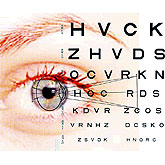Excerpts from AME Guide |
 |
Aerospace Medical Dispositions
Item 50. Distant Vision
- When corrective lenses are required to meet the standards, an appropriate limitation will be placed on the medical certificate. For example, when lenses are needed for distant vision only:
HOLDER SHALL WEAR CORRECTIVE LENSES
For multiple vision defects involving distant and/or intermediate and/or near vision when one set of monofocal lenses corrects for all, the limitation is:
HOLDER SHALL WEAR CORRECTIVE LENSES
For combined defective distant and near visual acuity where multifocal lenses are required, the appropriate limitation is:
HOLDER SHALL WEAR LENSES THAT CORRECT FOR DISTANT VISION AND POSSESS GLASSES THAT CORRECT FOR NEAR VISION
For multiple vision defects involving distant, near, and intermediate visual acuity when more than one set of lenses is required to correct for all vision defects, the appropriate limitation is:
HOLDER SHALL WEAR LENSES THAT CORRECT FOR DISTANT VISION AND POSSESS GLASSES THAT CORRECT FOR NEAR AND INTERMEDIATE VISION - An applicant who fails to meet vision standards and has no SODA that covers the extent of the visual acuity defect found on examination may obtain further FAA consideration for grant of an Authorization under the special issuance section of part 67 (14 CFR 67.401) for medical certification by submitting a report of an eye evaluation. The AME can help to expedite the review procedure by forwarding a copy of FAA Form 8500-7, Report of Eye Evaluation, that has been completed by an eye specialist (optometrist or ophthmologist) 24.
- Applicants who do not meet the visual standards should be referred to a specialist for evaluation. Applicants with visual acuity or ocular muscle balance problems may be referred to an eye specialist of the applicant's choice. The FAA Form 8500-7, Report of Eye Evaluation, should be provided to the specialist by the AME.
- Amblyopia. In amblyopia ex anopsia, the visual acuity of one eye is decreased without presence of organic eye disease, usually because of strabismus or anisometropia in childhood. In amblyopia ex anopsia, the visual acuity loss is simply recorded in Item 50 of FAA Form 8500-8, and visual standards are applied as usual. If the standards are not met, a report of eye evaluation, FAA Form 8500-7, should be submitted for consideration.
Any applicant eligible for a medical certificate through special issuance under these guidelines shall pass a MFT, which may be arranged through the appropriate agency medical authority. While waiting to complete a MFT, an applicant who is otherwise qualified for certification may be issued a medical certificate, which must contain the limitation:
- Valid for Student Pilot Privileges Only.
Note: Numbers correspond to the required entry in the AME portion of the FAA Form 8500-8
Note: Numbers correspond to the required entry in the AME portion of the FAA Form 8500-8
